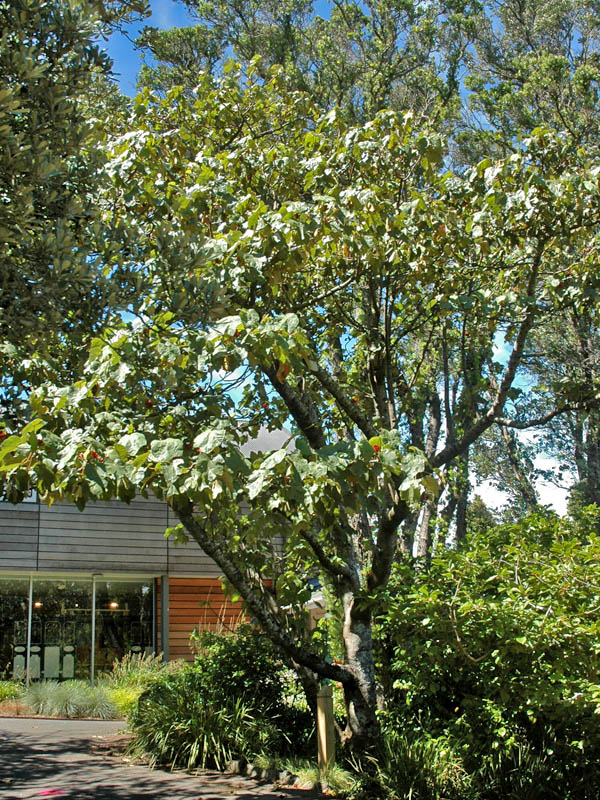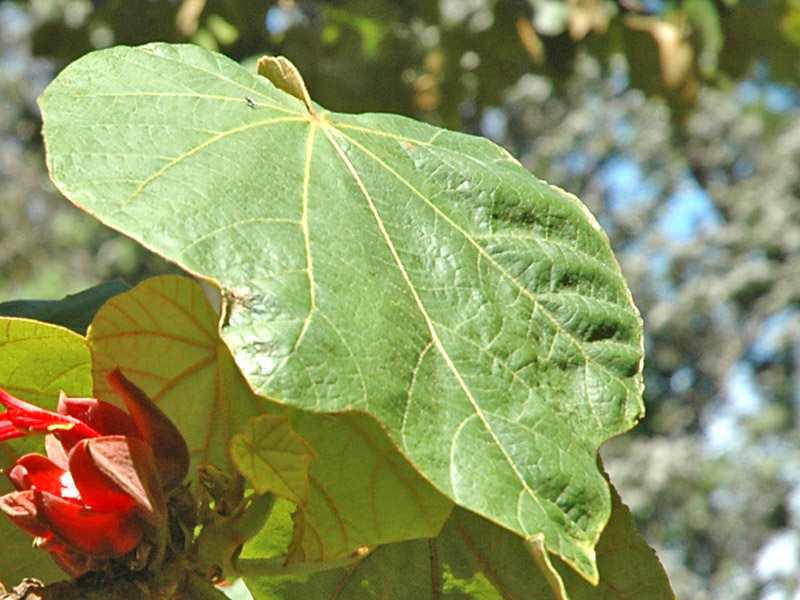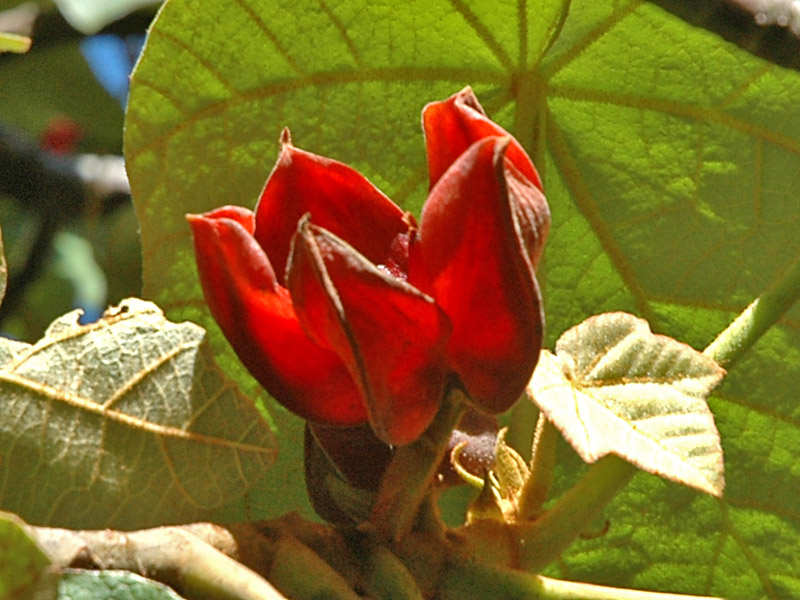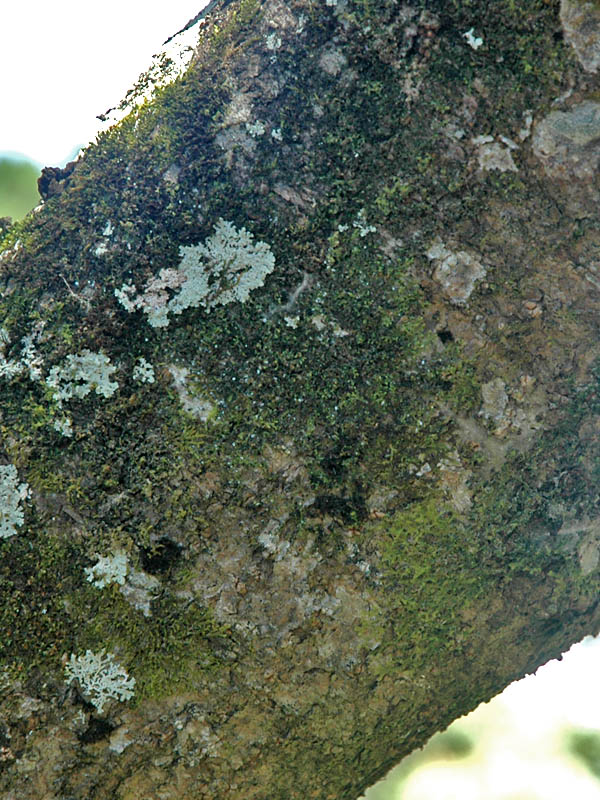
Tropicals, Woody > Chiranthodendron > Chiranthodendron pentadactylon > Chiranthodendron pentadactylon
Chiranthodendron pentadactylon
Devil's Hand Tree, Monkey Hand Tree, Mexican Hand Tree
Origin: Southern Mexico and Guatemala.
Mike's
Opinion


"
A medium to large tree, native to Southern Mexico, Chiranthodendron pentadactylon also known as “The monkey hand tree, the devils hand tree, or Mexican hand tree” is named after its Bright red flowers that resemble a “clawed hand”. A bizarre, yet grand specimen to have in any collection.
Michael Pascoe, NDP., ODH., CLT., MSc. (Plant Conservation)
"
| Family |
| Malvaceae |
| Genus |
| Chiranthodendron |
| Species |
| pentadactylon |
| Category |
| Tropicals, Woody |
| Type |
| Tree (evergreen) |
| USDA Hardiness Zone |
| Zone 9 |
| Canadian Hardiness Zone |
| Requires cool season protection under glass. |
| RHS Hardiness Zone |
| H3 |
| Temperature (°C) |
| (-6.5)˚ - (-1)˚ |
| Temperature (°F) |
| 20˚ - 30˚ |
| Height |
| 9-12 m |
| Spread |
| 6-12 m |
Photographs
Description and Growing Information
Flowering Period
| General Description |
| A medium to large evergreen tree with distinctive red flowers resembling open hands. |
| Landscape |
| The tree can be found in gardens around the world where it is used as an accent plant or as a specimen due to its eerie and unique flowers. The exceptional appearance of this tree has made i popular in public parks. |
| Cultivation |
| Full sun and a moist, loamy soil with a pH range of neutral to slightly alkaline. |
| Shape |
| Upright and ovate. |
| Growth |
| Fast |
| ID Characteristic |
| Bright red flowers with 5 long stamens and vivid yellow pollen on the “knuckle” area. Flowers curve with the blooms age, giving it its clawed hand appearance. The leaves are over-sized, shallowly and lobed with fuzzy undersides. The fruit is oblong, with an ovoid seed capsules that contain small black seeds. |
| Pests |
| Verticilliatum dahlia, also known as Dahlia wilt. |
| Habitat |
| A subtropical tree that occurs in wet slopes and ridges. |
| Bark/Stem Description |
| The bark is a light, dull-grey with striations running along the trunk. Newer growth is smoother and softer grey in colour. |
| Flower/Leaf Bud Description |
| Stellate-ovate in shape with a dull red tinge to the floral cup. |
| Leaf Description |
| A broad-ovate to palmate leaf, with five ruby metallic veins emerging from the base. Generally 15-30 cm in length with the underside covered in brown pubescent hairs. |
| Flower Description |
| Instead of separate petals, there is a floral cup combining sepals and petals, roughly 3-5 cm with brown hairs on the outer sides. Five lobed, with nectar-containing pouches at the base of each. The distinct five stamens; joined at the base, shoot upward and extend into five finger like anther’s. Each anther opens along the side to reveal strips of pollen along the “knuckles” of the hand. The tips of the narrow anthers eventually curl to create the claw effect. |
| Fruit Description |
| A woody and oblong five-lobed capsule that can reach 7-10 cm in length, and is covered in brown pubescent hairs. Eventually opening to reveal the small black seeds inside. |
| Colour Description |
| Bright red flowers with yellow pollen veins, green leaves with ruby metallic veins, and a light grey bark. |
| Texture Description |
| A coarse textured plant. |
| Notable Specimens |
| The Golden Gate Park, San Francisco, United States of America. |
| Propagation |
| Scarifying the hard seed coat can assist in germination. Soak the seeds for 24-36 hours. If you notice seeds floating just give it a soft stir to help them sink. However DO NOT remove the fuzzy orange tip on the seed. Sow the seeds in a well-drained potting mix, in a relatively tall pot, about 10 cm tall. Place the seed on top of the mix and cover with approximately 6 mm of mix, adding water throughout, but not making it soggy. Most seeds should germinate between 4-10 weeks however, slow seeds can take up to 5 months. Upon sprouting, the seeds should throw off their shell within 4 days. During this time, drip some water of the seed shell once or twice a day to keep the shell soft. If after 4 days they still have their shell, gently separate the shell with your nail. In about 2 weeks you can allow them some morning sun, gradually increasing the amount of time until around 4-5 months when they should be at full sun. In hotter climates, afternoon shade may be needed to prevent burning. Once they reach about 2-5 cm tall, transplant into larger pots. Deeper pots are preferred. The soil should stay moist through the cycle. The temperature should be kept moderate. It is recommended keeping it away from prolonged frost for the first two years. |
| Ethnobotanical Uses (Disclaimer) |
| Chiranthodendron pentadactylon was used by the Aztec for several medicinal purposes, as well as amulets (flowers). Known to help with heart problems and lower abdominal pain, the Aztec used the pressed leaves and bark of the tree to create juices made into lotions to help relieve pain. |



